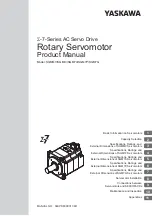
CAUTION
(SEE SECTION 3.3: AUXILIARY OVERFLOW PAN)
In compliance with recognized codes, an auxiliary drain pan must be installed
under all equipment containing evaporator coils that are located in any area of
a structure where damage to the building or building contents may occur as a
result of an overflow of the coil drain pan or a stoppage in the primary conden
-
sate drain piping.
WARNING
(SEE SECTION 3.6: AIR FILTER)
Do not operate the system without filters. A portion of the dust entrained in
the air may temporarily lodge in the duct runs and at the supply registers. Any
circulated dust particles could be heated and charred by contact with the heat-
ing elements. This residue could soil ceilings, walls, drapes, carpets and other
articles in the building.
Soot damage may occur even with filters in place when certain types of can
-
dles, oil lamps or standing pilots are burned.
WARNING
The first 36 inches of supply air plenum and ductwork must be constructed
of sheet metal with no openings, registers or flexible air ducts located in it as
required by NFPA 90B if an electric heater accessory is installed. If flexible
supply air ducts are used they may be located only in the vertical walls of a
rectangular plenum, a minimum of 6 inches from the solid bottom.
WARNING
Because of possible damage
to equipment or personal injury,
installation, service, and mainte-
nance should be performed by a
trained, qualified service person-
nel. Never operate the unit with the
access panels removed.
WARNING
These instructions are intended as an aid to qualified, licensed service per
-
sonnel for proper installation, adjustment and operation of this unit. Read
these instructions thoroughly before attempting installation or operation.
Failure to follow these instructions may result in improper installation, adjust-
ment, service or maintenance possibly resulting in fire, electrical shock, prop
-
erty damage, personal injury or death.
WARNING
If removal of the blower assembly
is required, all disconnect switches
supplying power to the equipment
must be de-energized and locked
(if not in sight of unit) so the field
power wires can be safely removed
from the blower assembly. Failure
to do so can cause electrical shock
resulting in personal injury or death.
WARNING
Disconnect all power to unit before
installing or servicing. More than
one disconnect switch may be
required to de-energize the equip-
ment. Hazardous voltage can cause
severe personal injury or death.
WARNING
Duct leaks can create an unbalanced system and draw pollutants such as dirt,
dust, fumes and odors into the building causing property damage. Fumes
and odors from toxic, volatile or flammable chemicals, as well as automobile
exhaust and carbon monoxide (CO), can be drawn into the occupied space
through leaking ducts and unbalanced duct systems causing personal injury
or death (see Figure 1).
• If air-moving equipment or ductwork is located in garages or off-garage stor
-
age areas - all joints, seams, and openings in the equipment and duct must
be sealed to limit the migration of toxic fumes and odors including carbon
monoxide from migrating into the living space.
• If air-moving equipment or ductwork is located in spaces containing fuel
burning appliances such as water heaters or boilers – all joints, seams, and
openings in the equipment and duct must also be sealed to prevent depres-
surization of the space and possible migration of combustion byproducts
including carbon monoxide into the occupied space.
WARNING
(SEE SECTION 3.5: DUCTWORK)
Do not, under any circumstances, connect return ductwork to any other heat
producing device such as fireplace insert, stove, etc. Unauthorized use of
such devices may result in fire, carbon monoxide poisoning, explosion, per
-
sonal injury or property damage.
WARNING
(SEE SECTION 3.11.3: GROUNDING)
The unit must be permanently grounded. Failure to do so can result in electri-
cal shock causing personal injury or death.
Carbon Monoxide (CO) Poisoning
Can Cause Severe Injury or Death.
Carbon Monoxide from the exhaust of motor
vehicles and other fuel burning devices can be
drawn into the living space by the operation of the
central heating and air conditioning system.
Exhaust from motor vehicles, generators, garden
tractors, mowers, portable heaters, charcoal and gas
grills, gasoline powered tools, and outdoor camping
equipment contains carbon monoxide, a poisonous gas
that can kill you. You cannot see it, smell it, or taste it.
•
Do NOT operate an automobile or any engine in a
garage for more than the few seconds it takes to
enter or exit the garage.
•
Do NOT operate any fuel-burning device in an
enclosed or partly enclosed space, or near
building windows, doors or air intakes.
The U.S. Consumer Product Safety Commission (CPSC)
and Health Canada recommend the installation of UL or
CSA certified Carbon Monoxide Alarm(s) in every home.
WARNING
!
!
!
1.0 SAFETY INFORMATION
!
!
!
!
!
!
!
Содержание HCLA2090CAR
Страница 34: ...34 5 3 DISCHARGE PLENUM DISCHARGE GRILLE INLET GRILLE KITS...
Страница 36: ...36 5 5 HOT WATER STEAM COILS Designates Metric Conversions...
Страница 40: ...40 97B0136N01 CM 0418...





































